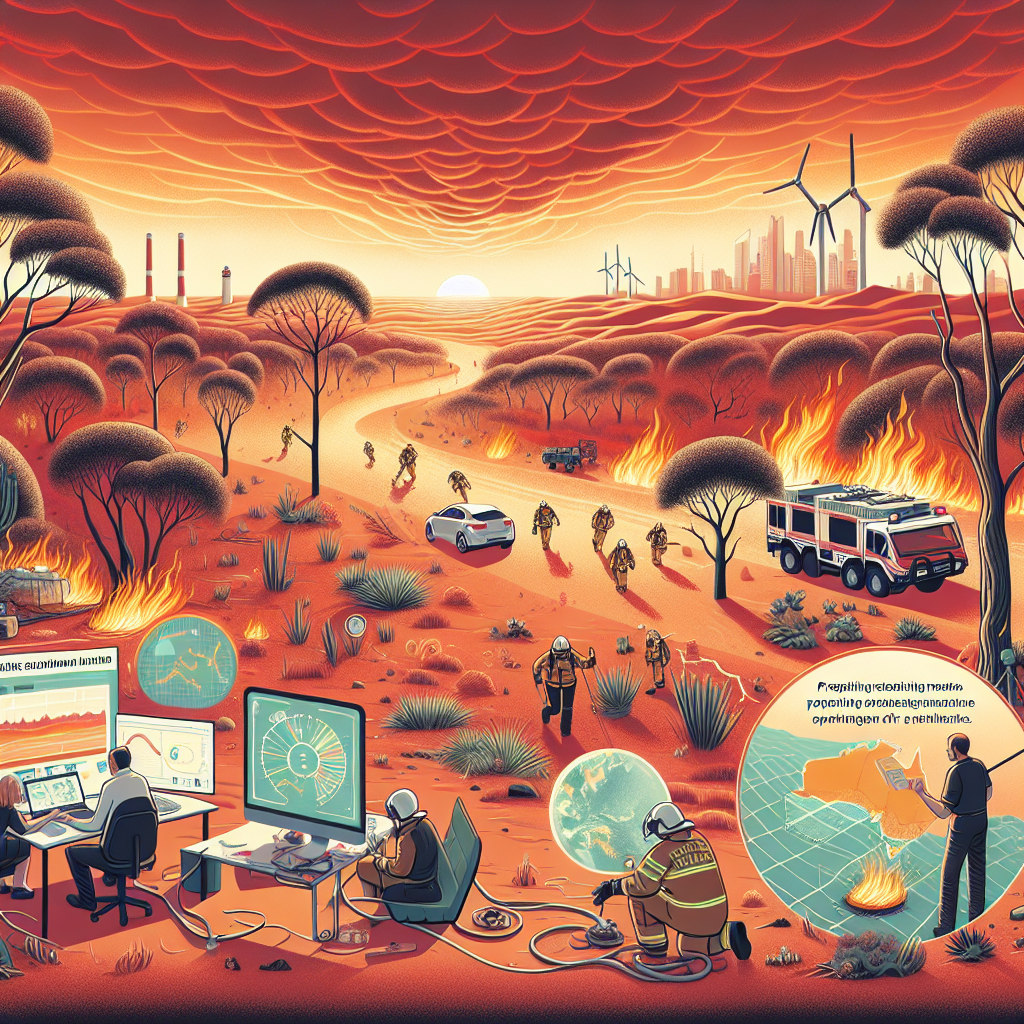Australia has always been a country defined by its beautiful yet volatile environment. However, the global rise in temperatures and shifts in climate patterns have made bushfires an increasingly potent threat. Recent reports indicate that extreme weather events linked to climate change are significantly altering the bushfire landscape, demanding immediate action. In this blog post, we dive deep into how Australia can bolster its strategies to mitigate bushfire risks, protect its environment, and prepare its communities for a more resilient future.
Understanding the Changing Bushfire Landscape in Australia
Australia’s fires are no longer confined to traditional definitions of “bushfire seasons.” Climate variability has extended the fire season, increased the frequency of severe fire weather events, and intensified the destruction they leave behind. This drastic shift is attributed to the following factors:
- Rising Temperatures: Australia’s warming climate is pushing temperatures beyond historical norms, leading to drier vegetation that acts as fire fuel.
- Reduced Rainfall: Prolonged droughts have left landscapes parched, diminishing water reserves needed to combat fires effectively.
- Strong Winds: Fierce winds associated with climate change are accelerating the spread of fires, often making them harder to control.
These factors combined mean that bushfire risks are no longer just seasonal; they are evolving into a year-round challenge. Therefore, Australia must adapt its strategies to address these increasing threats proactively.
Building a Resilient Future: Key Focus Areas
To prepare for a future where bushfires are more frequent and severe, Australia must focus on strengthening its resilience in several key areas. Let’s explore these strategies.
1. Climate Change Mitigation and Adaptation
Addressing bushfire risks starts with tackling the root cause: climate change. By reducing greenhouse gas emissions and transitioning to renewable energy sources, Australia can help limit the extent of global warming. Key measures include:
- Investing in Renewable Energy: Expanding wind, solar, and hydroelectric power to replace fossil fuels.
- Enforcing Emission Reduction Targets: Implementing policies to meet net-zero goals by 2050 or sooner.
- Encouraging Carbon Sequestration: Protecting and restoring forests, soil, and other natural carbon sinks.
Additionally, adaptation measures—such as designing infrastructure that withstands extreme heat and employing water-saving technologies—are equally crucial in ensuring communities can endure harsher climates.
2. Advanced Bushfire Prediction and Monitoring Systems
Technology has an essential role to play in reshaping Australia’s bushfire response capabilities. Advancements in prediction and monitoring systems can help authorities stay ahead of disaster. This includes:
- Satellite Observation: High-resolution imaging to detect hotspots and predict fire movement in real time.
- AI-Based Modeling: Machine learning algorithms to analyze terrain, vegetation, and weather patterns to forecast fire risk zones.
- Early Warning Alerts: Tech-integrated systems to notify residents and emergency services of potential threats, giving communities more time to act.
By harnessing these tools, Australia can enhance its preparedness and contain bushfires before they escalate into uncontrollable disasters.
3. Strengthening Firefighting Capabilities
Bushfire incidents of recent years have shown that firefighting resources are often stretched thin during crises. To overcome this, investment in manpower, equipment, and strategies is vital. Key recommendations include:
- Expanding Aerial Firefighting: Increasing the number of water-bombing planes and drones to suppress fires in remote and inaccessible areas.
- Boosting Volunteer Programs: Engaging and training local communities to assist professional firefighters during emergencies.
- Cross-Border Collaboration: Partnering with international fire departments for knowledge-sharing and resource-sharing during extreme events.
Enhancing firefighting capabilities ensures faster and more effective responses, reducing both the scale of destruction and the loss of life.
The Role of Communities in Bushfire Preparedness
While governments and institutions play a critical role, bushfire resilience also heavily depends on community involvement. Local safety starts with individual preparedness and awareness. Here are actionable steps communities can take:
1. Developing Bushfire Action Plans
Every household in bushfire-prone areas should have a clear and well-practiced bushfire survival plan. This includes:
- Identifying Safe Zones: Knowing the safest evacuation routes and locations in advance.
- Preparing Emergency Kits: Stocking essential items like water, non-perishable food, first aid supplies, and important documents.
- Staying Informed: Regularly checking official fire warnings and weather updates.
2. Fireproofing Homes and Properties
Simple preventive measures can significantly reduce a home’s vulnerability to bushfires:
- Clearing Vegetation: Regularly removing dry leaves, branches, and other flammable materials from around properties.
- Installing Fire-Resistant Materials: Using metal roofing and non-combustible building materials whenever possible.
- Creating Defensible Space: Ensuring adequate space between trees and structures to prevent fire spread.
3. Engaging in Community Fire Drills
Organized drills can help familiarize residents with evacuation procedures and ensure seamless coordination when disaster strikes. This builds a culture of readiness and collective responsibility in addressing bushfire threats.
Looking Forward: Building a Resilient, Unified Australia
It is clear that bushfire risks in Australia are evolving at an unprecedented rate, and the need for proactive measures has never been greater. From enacting strong climate policies to empowering communities with the knowledge and resources to protect themselves, every effort counts. Governments, researchers, firefighters, and individuals must work together to implement these strategies and ensure that resilience is woven into the fabric of Australian society.
By acting decisively today, Australia can safeguard its natural heritage, infrastructure, and most importantly, its people, from the escalating dangers of bushfires. The journey to resilience may be challenging, but with collective effort and informed policies, a safer and more sustainable future for Australia is within reach.
Let us all do our part to prepare, adapt, and build a future where communities can thrive, even in the face of evolving natural threats.
“`


